
Friday, August 11, 1967
Photo shoot with Richard Avedon
Last updated on August 24, 2024

Friday, August 11, 1967
Last updated on August 24, 2024
Location: Thompson House studios, 200 Gray’s Inn Road, London
Article July 30 or 31, 1967 • John Lennon and Paul McCartney travel from Greece to England
Article August 7-8, 1967 ? • Paul McCartney's short holidays in Liverpool
Article Aug 11, 1967 • Photo shoot with Richard Avedon
Single Aug 18, 1967 • "We Love You / Dandelion" by The Rolling Stones released in the UK
Interview Aug 19, 1967 • Brian Epstein interview for Melody Maker
Next article Aug 24, 1967 • The Beatles meet Maharishi Mahesh Yogi
On this day, the Beatles were photographed by Richard Avedon in a photo studio located in a penthouse in Thompson House, 200 Gray’s Inn Road, London. The American photographer took many shots of the band. Four of them were used to produce four psychedelic images, first released in the US magazine Look in January 1968 and in the UK Daily Express in February 1968.
Those psychedelic photos would later be used in the packaging of the 2000 compilation album “1”.
Richard Avedon had previously shot photos of Paul McCartney and Ringo in January 1965 in the same photo studio in Thompson House.
The Beatles would meet again in the same photo studio in August 1968 during their “Mad Day Out” photo session.
In keeping with the Beatles’ pioneering desire to experiment with unconventional formats in their music and the packaging of their albums, their manager Brian Epstein commissioned Avedon to photograph the band members and design a set of posters that would visually capture the new psychedelic direction of Sgt. Pepper’s Lonely Hearts Club Band and Magical Mystery Tour. Avedon overlaid the solarized prints with Day-Glo colors and symbolic attributes Ringo’s white peace dove, George’s mystical henna patterns, Paul’s flower power, and John’s trippy eyeglasses. The posters were printed in four different countries and released simultaneously through popular magazines for maximum international impact.
From Richard Avedon. Paul McCartney. 1967 | MoMA










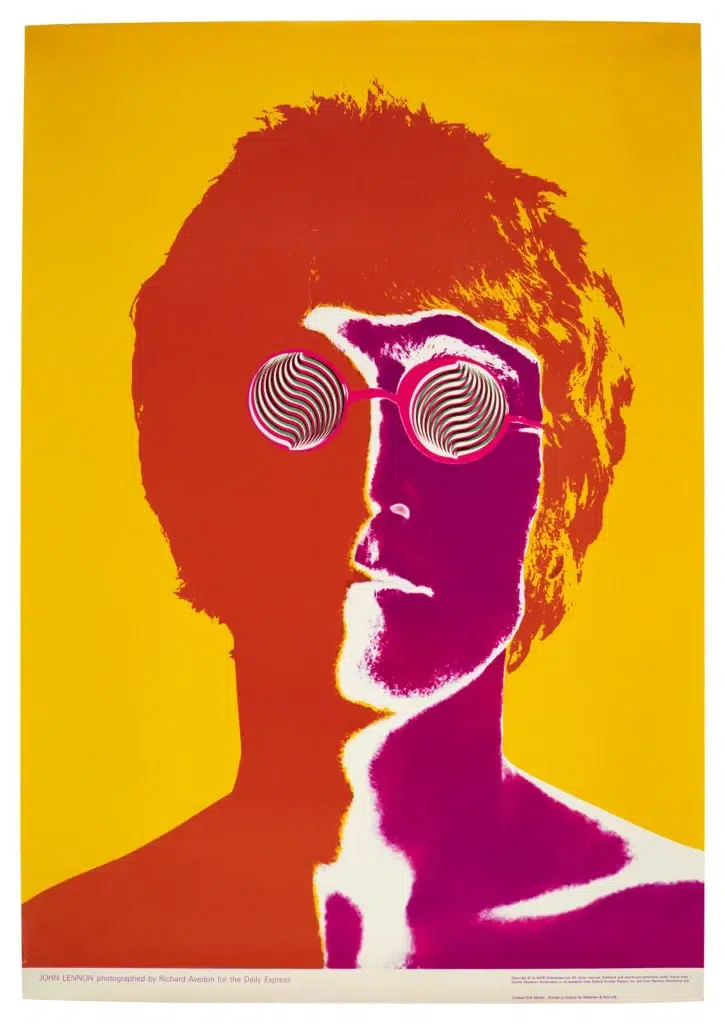
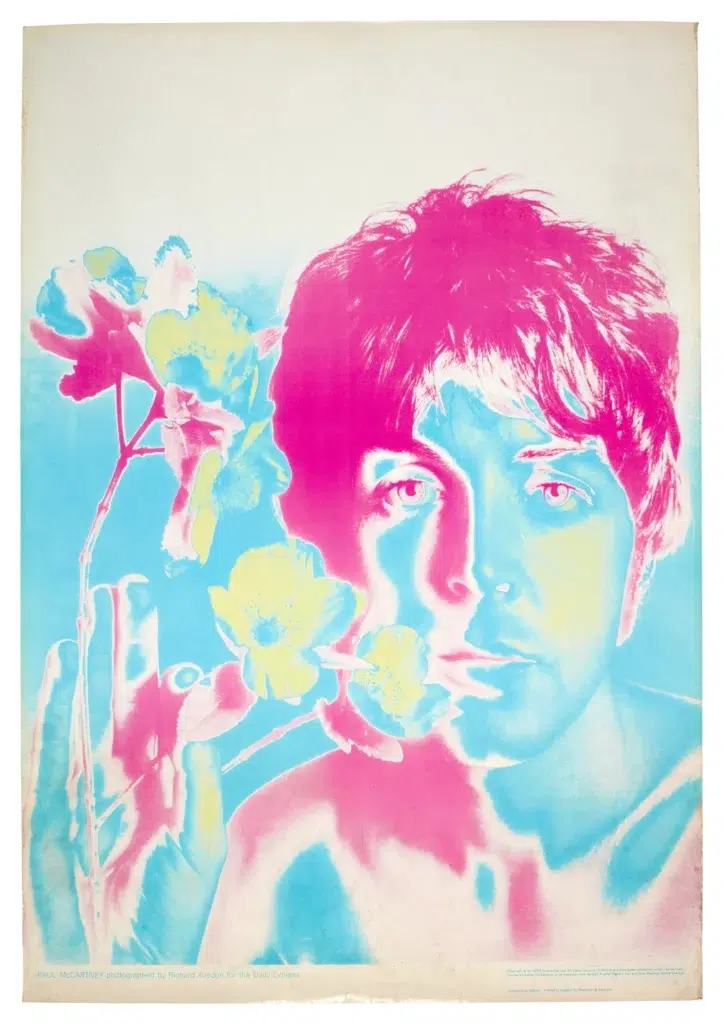
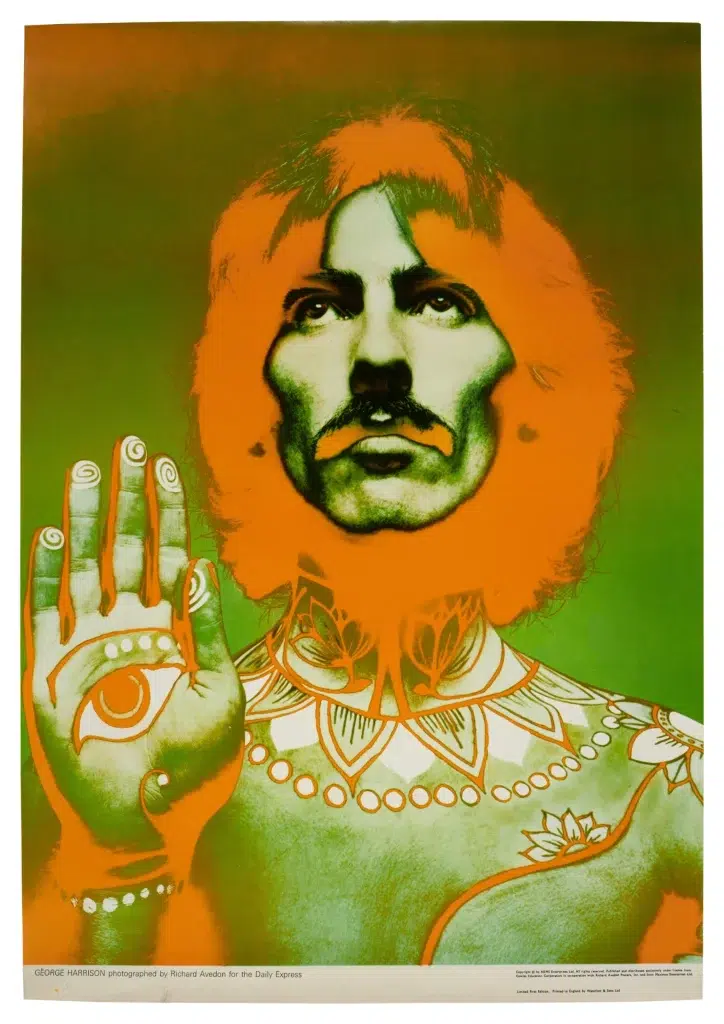
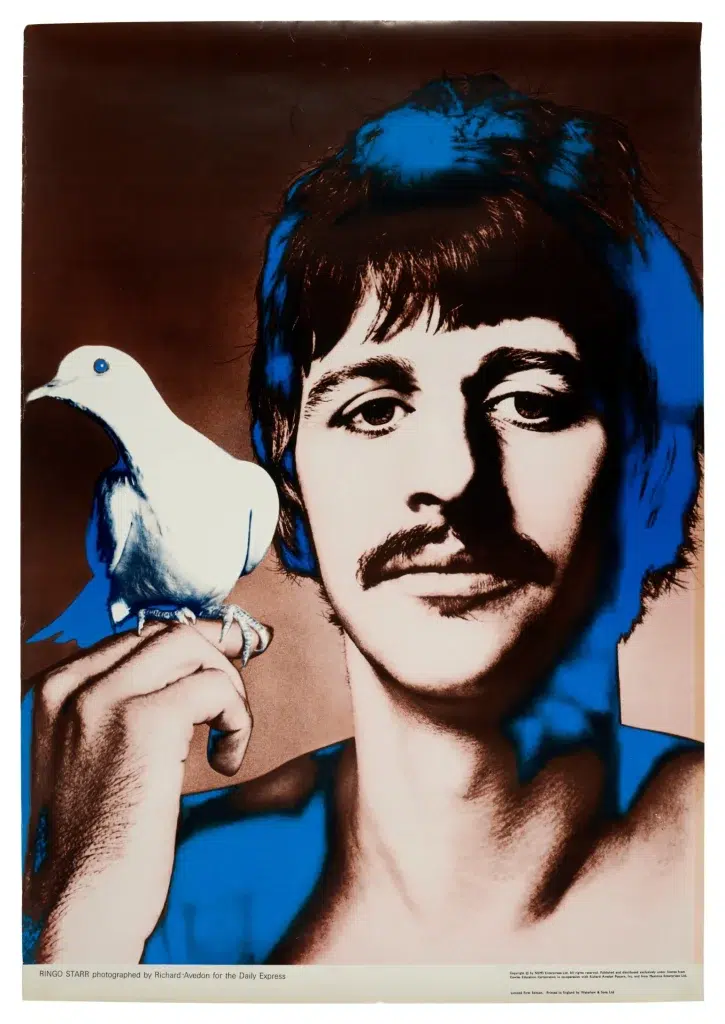

Four other individual black and white portraits of the Beatles, taken during this session, were assembled into a collage. This collage, nicknamed “Mount Rushmore,” was published in Look Magazine alongside the four psychedelic portraits of the band.
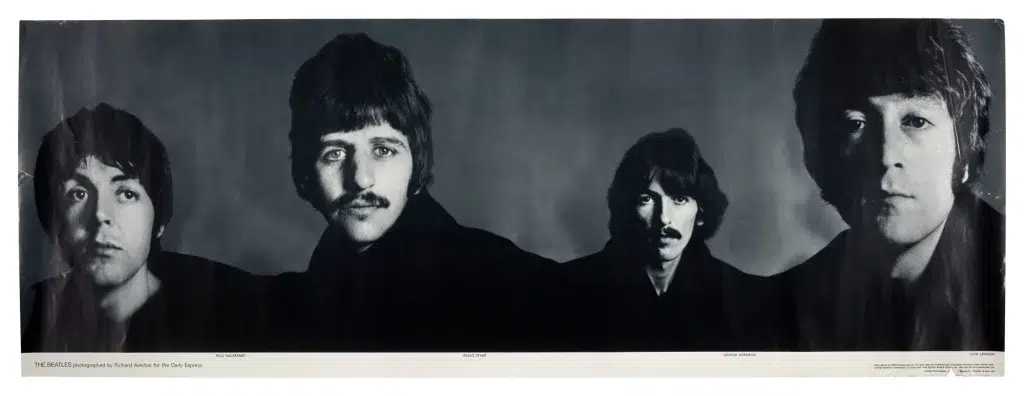
In 1977, Capitol Records released a Beatles compilation called “Love Songs,” with packaging designed by Capitol’s Art Director, Kenneth R. Anderson. Anderson intended to use the “Mount Rushmore” collage but was unaware that it was a compilation of four separate portraits. Additionally, he wanted to bring Paul McCartney to the forefront since he was the main composer of many songs and the only Beatle still connected to Capitol at the time. Using airbrush retouching, Capitol Records created a modified version of “Mount Rushmore” to use as a logo and inner gatefold for the album.
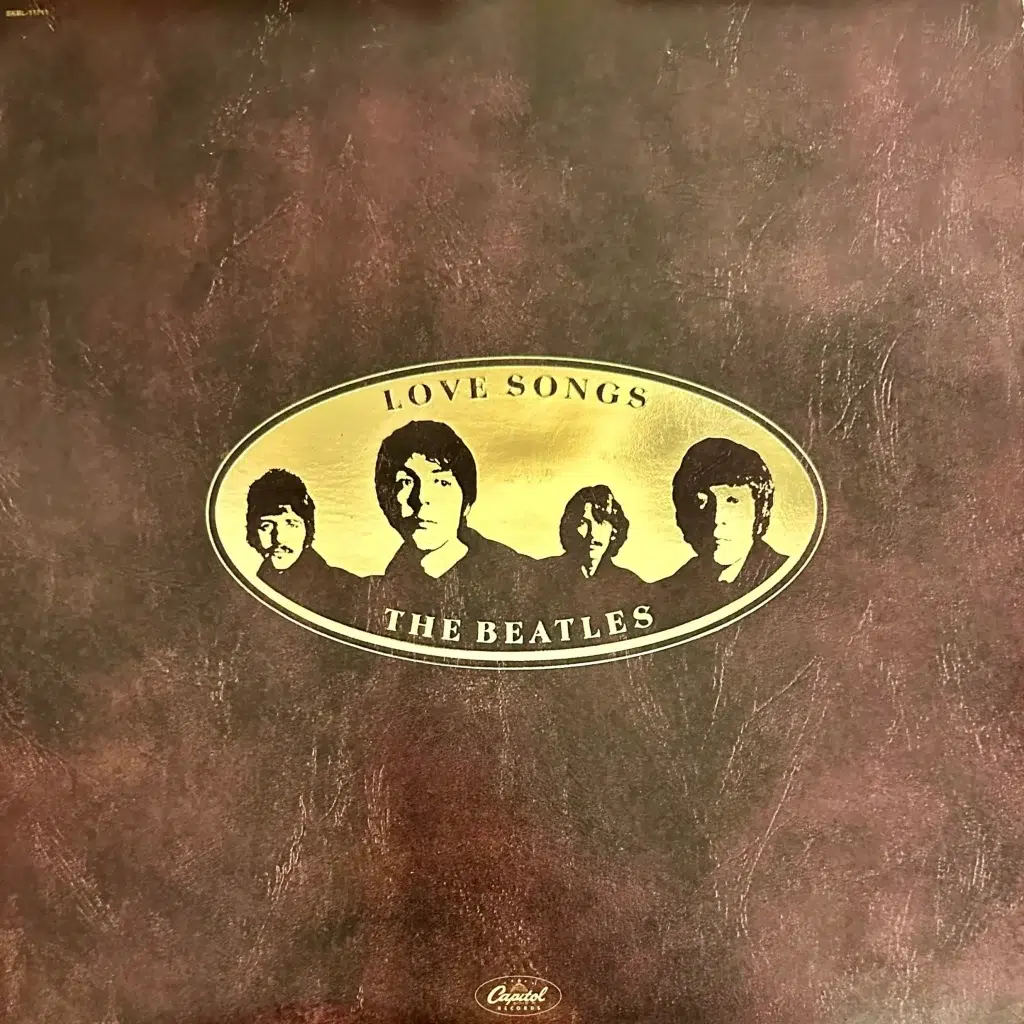
The Beatles Diary Volume 1: The Beatles Years
"With greatly expanded text, this is the most revealing and frank personal 30-year chronicle of the group ever written. Insider Barry Miles covers the Beatles story from childhood to the break-up of the group."
We owe a lot to Barry Miles for the creation of those pages, but you really have to buy this book to get all the details - a day to day chronology of what happened to the four Beatles during the Beatles years!
If we modestly consider the Paul McCartney Project to be the premier online resource for all things Paul McCartney, it is undeniable that The Beatles Bible stands as the definitive online site dedicated to the Beatles. While there is some overlap in content between the two sites, they differ significantly in their approach.
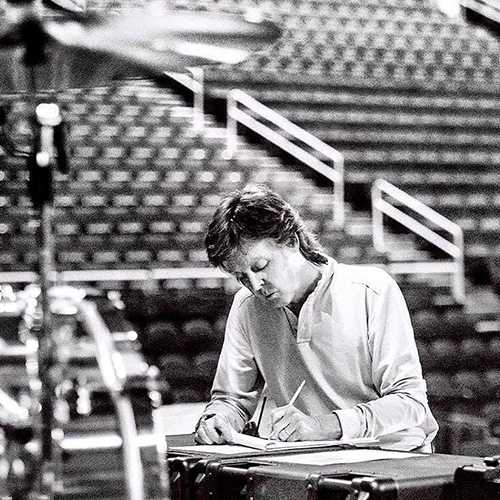
Notice any inaccuracies on this page? Have additional insights or ideas for new content? Or just want to share your thoughts? We value your feedback! Please use the form below to get in touch with us.